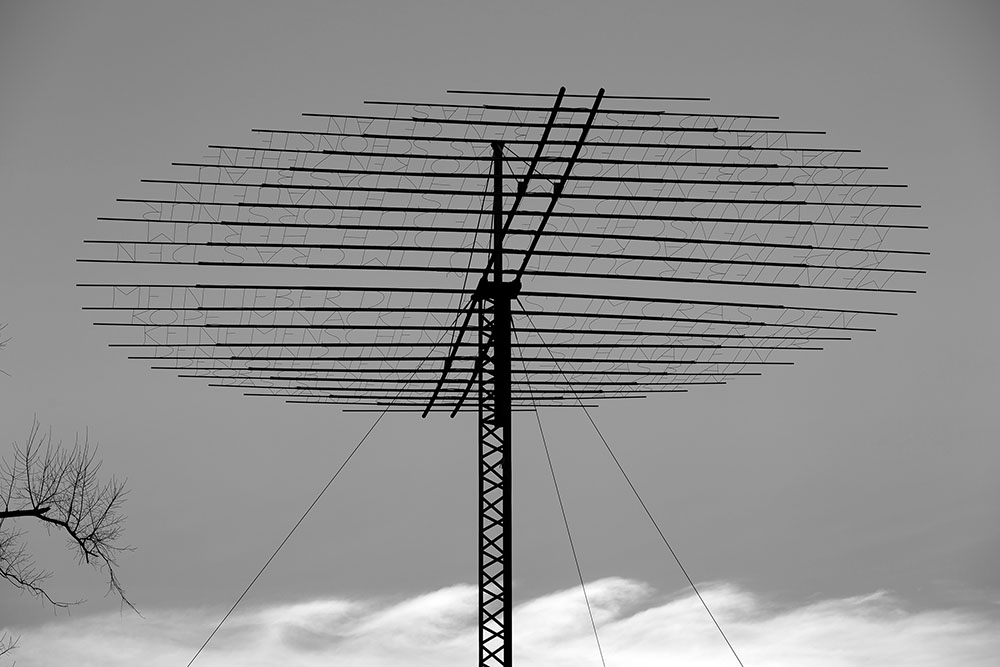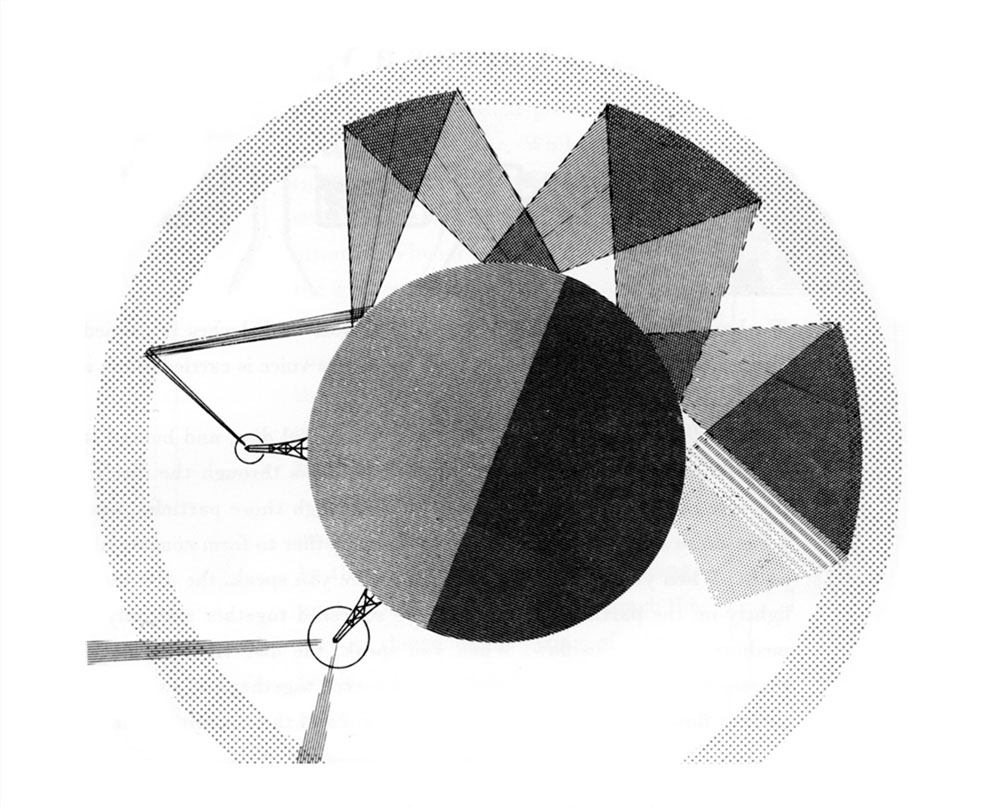Interview / Manfred Grübl / Version 3
Recording
MG: The first statement in the Kunstradio – Radiokunst manifesto reads: “Radio art is the use of radio as a medium for art.” Can you elaborate on that?
EZ: Kunstradio doesn’t define itself through music, nor does it originate from music. There are a lot of artists with all kinds of backgrounds who approach sound in completely different ways—often using music simply as raw material. For them, art radio is probably more of a good pool for finding many things that have long since moved away from notated art or music.
HG: Kunstradio was founded by cultural journalist Heidi Grundmann and Robert Adrian X. It started as a cultural news program called Kunst Heute—even then, there was a small segment dedicated to „art to listen to (Kunst zum Hören).“ The 1998 manifesto was written by Robert Adrian X and was directed at visual artists. When it was presented, I started at Kunstradio and it says, for example: “Radio art is art for the radio by artists.” So it’s basically about artists coming up with something for the radio. The radio is then like the stretcher on which you make the art. That can take many forms. But if this stretcher radio apparatus is relevant as an object, then it is no longer radio art in that sense, but then it becomes sound art and we want to distance ourselves from that. Kunstradio doesn’t deal with objects. We present radio art and this is rather immaterial and actionistic.
MG: But that’s not a reduction to sound, is it? In painting, there has also been a discussion about whether the painting goes beyond the frame or whether the frame is part of the painting. How does this relate to your stretcher frame?
EZ: It’s actually about the fact that most artists see radio as a communication space and that goes far beyond broadcasting, because they try to communicate, overcome distances and use various radio-based technologies. All we can really do is provide the broadcasting surface, clarify a few legal aspects and provide technical support. I remember, back in 1990, when I was still in school, we went with our biology teacher to see Landscape Soundings by Bill Fontana. This was an installation on Maria-Theresien-Platz between the Natural History and Art History Museums as part of the Vienna Festival Weeks and was produced together with Kunstradio. They had set up 16 microphones in the Hainburger Au and transmitted the sounds of the birds, frogs and water to this place for ten days. There was a permanent line to the radio station, and any broadcaster could simply listen in or broadcast whenever they wanted. The weather caused funny situations—clear blue skies in Vienna, but when people came out of the museum they heard thunder and opened their umbrellas. It’s a kind of surveillance, because you never hear the birds on location in this form, you overcome distance and create a new space for people’s reactions.
HG: Brecht, in his Suggestions for the Director of the Radio (around 1930), argued that radio should be transformed from a distribution device into a communication device. Brecht’s radio theory is sometimes controversial. I like it very much. He claimed that in the 1910s the telephone had already achieved all these things that we now have on the Internet (but which Brecht knew nothing about) and that the telephone was much more of a communication device than the radio, because linear radio only transmitted concerts or kitchen recipes. So, in that sense, radio art is already subversive—it tries to open up the window in this old, traditional medium in a radically enlightening way.
EZ: We use the apparatus of radio and the entire broadcast structure differently. We treat the radio itself as an instrument for creating new content. Artists were already experimenting with the World Wide Web in the ’90s, back when it was still a relatively free space, and they connected that with radio. Radio was always there, surrounding us, because the waves were also always there. Humans just eventually figured out how to detect and make them audible. So really, we’re always bathing in frequencies.
HG: Sure, we’re restricted economically—we have limited airtime. But within that time, artists are relatively free. We do draw lines—sometimes more, sometimes less—between what we do and things like radio plays or documentaries. That distinction is important—not for us, but for the artists who produce for us. Not just broadcasts, but also festivals, exhibition contributions, all kinds of things.
EZ: Kunstradio was involved in this year’s Radio Revolten, an international radio art festival in Halle an der Saale, which was curated by four artists and myself. There was a 24-hour radio station where artists made radio around the clock for a month and, with the support of Radio Corax—the free radio station there—we transformed an entire building into a festival hub filled with sound and radio installations. There were performances every evening and an opening event in the town square, where the First German Electricity Orchestra performed using kitchen appliances and other gear—an amazing experience. 35 radio stations took over the program partially and Resonance FM Extra in Brighton completely.
HG: One of my favorite radio groups is Ligna, part of Hamburg’s Freies Sender Kombinat (FSK). They’re theater scientists and comic experts who invented the radio ballet for themselves. You are given various instructions—very Fluxus-style—which you can interpret and follow in your own way. It becomes a political, social intervention in public space. Some people might see it as command-like, because the voice with the instructions comes from the radio. It is precisely this process that is usually followed analytically in the text, followed by a review. They did a live broadcast with Kunstradio called Nacht. Stimme. Zerstreuung. (2006), where an actor read their script and then asked the listeners to turn off their radios for five seconds so he could say something they weren’t supposed to hear. I think he didn’t say anything, then added: “I know exactly that you didn’t turn it off—because you were too curious.” That’s the kind of moment that shows what radio can be.
EZ: It really gets you. I happened to be home that night, and of course I didn’t turn off my radio. I thought, “Oops. He saw me.” It was really well done…
MG: Yes, I can well imagine that and I would even like to expand this with the possibility of interaction. With live broadcasts, people can be called back, which opens the door to manipulation. Whatever the case, those ideas are super inspiring. Didn’t Anna Jermolaewa do a project with Kunstradio as well?
HG: Yes, that was for Sans Frontières by Robert Adrian X and Martin Leitner—a complex, interactive communication project about migration, symbolized through the rook (a type of bird). Anna Jermolaewa, who fled Russia, sent radio greetings to friends who had stayed behind.
EZ: She used both radio and the internet. We had a connection with the Sans Frontières video and sound installation in St. Petersburg, displayed in the shop windows of the Quo Vadis internet café. Passersby could watch and listen live. There were various events, including discussions and performances, which were broadcast live vice versa. The festival was organized by artist Elisabeth Schimana.
MG: To what extent does activism in the sense of political or social intervention actually play a role in the selection of your projects?
EZ: Kunstradio always closes out the musikprotokoll at the Steirischer Herbst festival. This year, Tunisian musician Deena Abdelwahed, born in 1989, performed live on Kunstradio from the esc medien kunst labor. In her performance, she incorporates her personal attitude, as well as music and text materials that show the inner contradictions of Tunisian society. She draws on excerpts from the Tunisian constitution and quotes from the book Mörderische Identitäten by the French-Lebanese author Amin Maalouf, which she juxtaposes. She invented television interviews with Tunisian young people. She herself plays the older presenter, who has little understanding for their way of life.
HG: In the past there were sometimes fifteen people in the team, now there have been three of us with Anna Soucek for a very long time. What used to be very activist-oriented—when we worked with hackers from the Chaos Computer Club—has shifted, sometimes in aesthetic issues, sometimes in more social projects and sometimes in literature. Voice, for example, has become central in the last five years. That wasn’t the case at all before, people were very concerned with the phenomenon of media as such and were very focused on it, but now it has become much broader and more socially diverse. The technical challenges used to be intense, and we’d constantly be crossing our fingers. Nowadays, the big challenge is how to engage subversively with modern platforms—YouTube, Facebook, SoundCloud, Tinder—but we are slow to get such concepts. I have ideas, though—like using geocaching to create an acoustic-social sculpture with strong sociopolitical dimensions, which then perhaps leaves art again and becomes real politics. But those ideas require real budgets. Take something like Terror by Schirach, that interactive TV play where viewers vote on whether a pilot is a murderer for shooting down a hijacked plane with 164 people to save 70,000. That kind of TV interaction is still linear—you get a yes/no choice. Of course, with the tools that are possible today, a completely different form of radio and networking would also be possible interactively …
MG: But you’d need a better system. Thumbs up or down isn’t good enough. That can mean anything—and it’s risky.
EZ: It really depends on what the artists bring. And that’s why Kunstradio keeps changing—it evolves with the concepts. We had Meira Asher, an Israeli artist who addresses intense sociopolitical topics. In her project, she interviewed African women who fled to the Canary Islands and were threatened by prostitution and human trafficking. She’s since started her own radio station. There are really very different topics that can, should and must be covered. But of course they are not processed in the same way as in a journalistic feature.
HG: Perhaps radio is an instrument to better understand the ambivalences of the world. Dominik Schrage wrote a book called Psychotechnik und Radiophonie about the psychological aspects of listening to the radio. He talks about „subject-effects“, which occur when you listen to a voice and enter into an inner dialog with it. But it’s also about the shared, simultaneous experience of an audience spread across space. That creates social realities, which can then of course be shaped by the content, dramaturgy and technical means. Radio in its conventional form is very concentrated. Of course, radio can also be used for violence and this has been done. In the U.S., dark radio often has a Republican, hardline tone. When I ask my students when they listen to radio, most say: “While cooking. So I’m not alone.” It’s just a machine in the room—but it creates that feeling.
EZ: But you always know that when you are listening to the radio yourself, someone else in a different situation is listening to the same thing at the same time. So you’re not alone after all.


